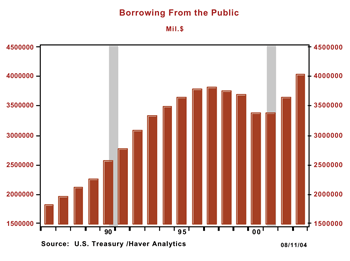
Navigating Economic Stability: Understanding Fiscal Policy in the USA
Introduction to Fiscal Policy
Fiscal policy in the United States plays a crucial role in steering the nation’s economy. It involves the government’s use of taxation and spending to influence economic activity. Understanding the intricacies of fiscal policy is essential for citizens, businesses, and policymakers alike.
Key Components of Fiscal Policy
Fiscal policy consists of two main components: taxation and government spending. Policymakers use taxation to control the amount of money individuals and businesses have available for spending. Simultaneously, government spending influences economic activity by injecting funds into specific sectors or projects.
The Counter-Cyclical Nature of Fiscal Policy
Fiscal policy is often employed in a counter-cyclical manner to address economic fluctuations. During periods of recession, the government may increase spending and reduce taxes to stimulate economic activity. Conversely, during periods of inflation, fiscal policy might involve cutting spending and raising taxes to cool down the economy.
Government Spending: Stimulating Economic Growth
One facet of fiscal policy involves strategic government spending to boost economic growth. Infrastructure projects, education initiatives, and healthcare investments are examples of areas where increased government spending can have a positive impact on employment, productivity, and overall economic health.
Taxation Policies: Balancing Revenue and Incentives
Taxation is a powerful tool within fiscal policy to generate government revenue and shape economic behavior. Changes in tax rates can influence consumer spending, business investments, and savings. Policymakers must strike a balance between raising necessary revenue and providing incentives for economic growth.
The Role of Fiscal Policy in Economic Stabilization
Fiscal policy serves as a stabilizing force in the economy. During times of economic downturns, increased government spending can counteract reduced private sector spending. Likewise, in periods of economic expansion, fiscal restraint can prevent overheating and inflation.
Challenges in Implementing Effective Fiscal Policy
Implementing effective fiscal policy is not without challenges. Political considerations, timing issues, and the complexity of economic dynamics can complicate decision-making. Striking the right balance and achieving bipartisan support are crucial for the successful execution of fiscal policies.
Global Implications of US Fiscal Policy
The fiscal policy decisions made in the United States have far-reaching implications globally. As one of the world’s largest economies, changes in U.S. fiscal policy can impact international trade, financial markets, and global economic stability. Coordination with other nations is often necessary to address interconnected economic challenges.
The Future of Fiscal Policy in the USA
The landscape of fiscal policy is continually evolving. Discussions around tax reform, infrastructure investments, and social spending programs shape the trajectory of fiscal policy in the USA. Policymakers grapple with finding innovative solutions to address economic challenges while ensuring fiscal responsibility.
CleverScale: Navigating Fiscal Policy Insights
For comprehensive insights into fiscal policy in the USA, visit Fiscal Policy USA. CleverScale provides analysis, commentary, and resources to help individuals and businesses understand the implications of fiscal policy decisions on the economy. Explore the platform for valuable insights into navigating the economic landscape.
Conclusion: Navigating Economic Waters
In conclusion, fiscal policy in the USA is a dynamic and influential force in shaping economic outcomes. From taxation and government spending to economic stabilization efforts, understanding the intricacies of fiscal policy is crucial. Stay informed about fiscal policy developments with resources like CleverScale to navigate the complex economic waters effectively.



